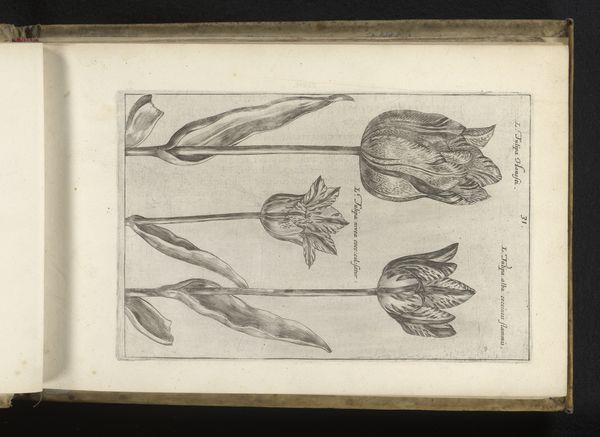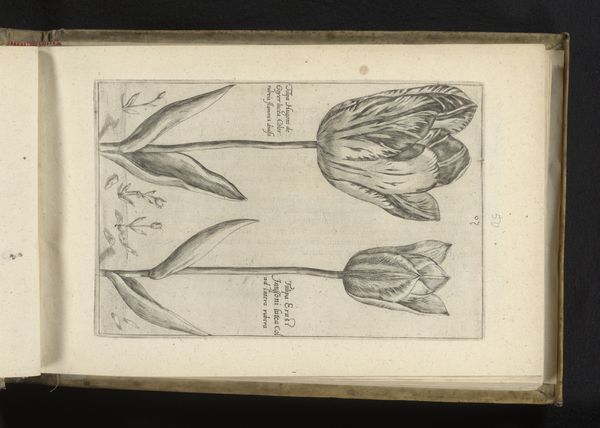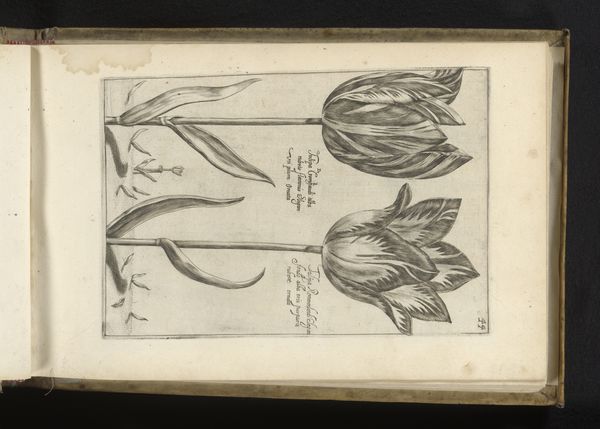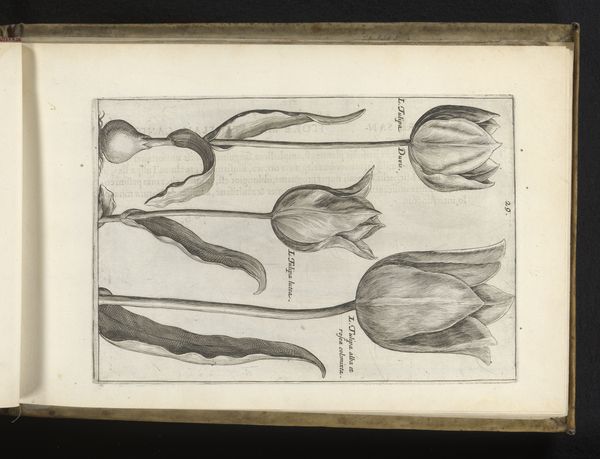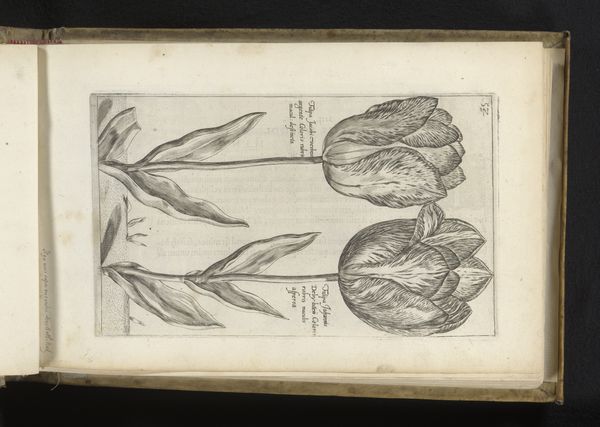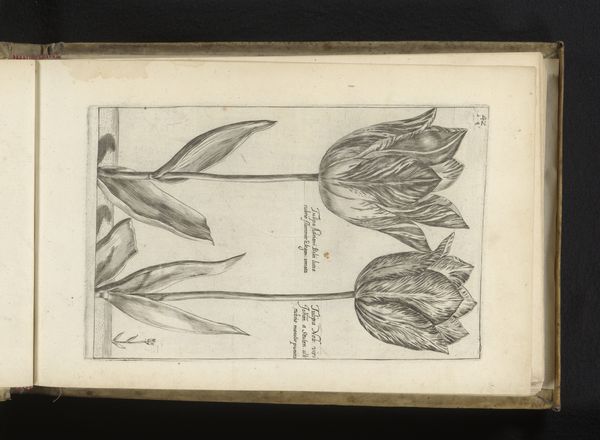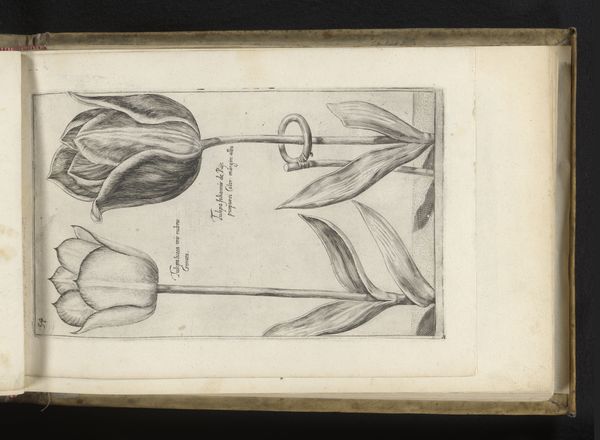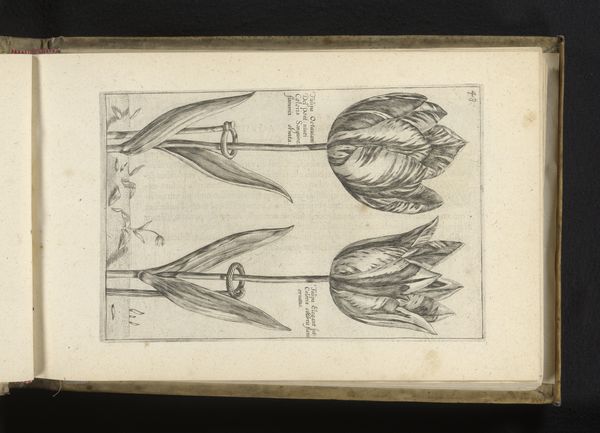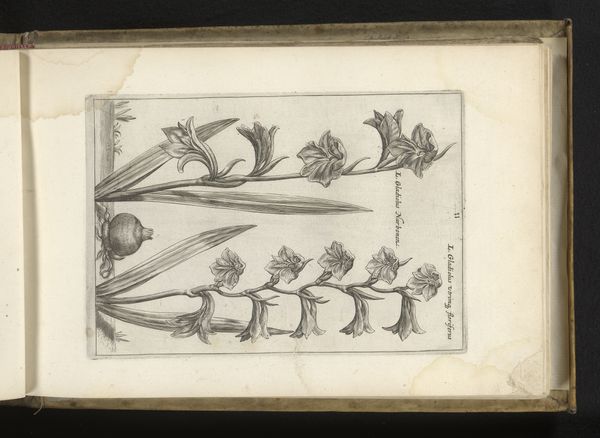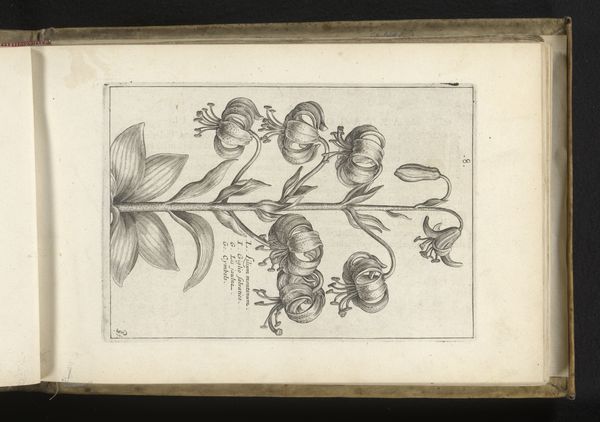
drawing, print, etching
#
drawing
# print
#
etching
#
flower
#
11_renaissance
#
pen-ink sketch
#
line
#
northern-renaissance
#
realism
Dimensions: height 218 mm, width 139 mm
Copyright: Rijks Museum: Open Domain
Editor: This is "Twee tulpensoorten," or "Two Tulip Varieties," an etching from 1617 by Crispijn van de Passe II. It's incredible how detailed the rendering is. I find myself wondering how social attitudes at the time are reflected here. What do you see in this piece that tells us something about its historical or cultural context? Curator: Well, it's impossible to ignore tulip mania in the Netherlands at this time. The tulip craze really took off just before this piece was made, with bulbs becoming extraordinarily valuable and highly sought after luxury goods. Think about what it means to carefully illustrate and document *specific varieties* of tulips. Editor: So, this print isn't just about appreciating flowers, but about something bigger than that. Like...capitalism? Curator: Precisely. It's about status, trade, and scientific observation, all wrapped up in one beautiful image. Etchings like these circulated widely. Did they fuel the speculative bubble? Or were they just dispassionate documentation of highly prized specimens for scientific purposes, like a botanical journal? That is harder to say, but their existence definitely underscores the plant's cultural significance. How do you think it connects to the world outside wealthy collectors’ gardens? Editor: That is quite interesting. It really adds another layer of meaning to what initially just looks like a simple drawing of flowers. Considering the limited color palette in a monochrome print, do you feel like the impact is any different than if they were displayed in color? Curator: That's an interesting question. Restricting it to monochrome potentially elevated the clean line work of Northern Renaissance, allowing artists to further capture detail and dimension using hatching and varying the opacity. That effect would likely have been much harder to replicate if a wide color palette was adopted instead. What have you taken away from this discussion? Editor: It's fascinating to consider how even something seemingly straightforward can be so deeply connected to larger social and economic phenomena. Curator: Absolutely, it underlines the point that art doesn't exist in a vacuum.
Comments
No comments
Be the first to comment and join the conversation on the ultimate creative platform.
